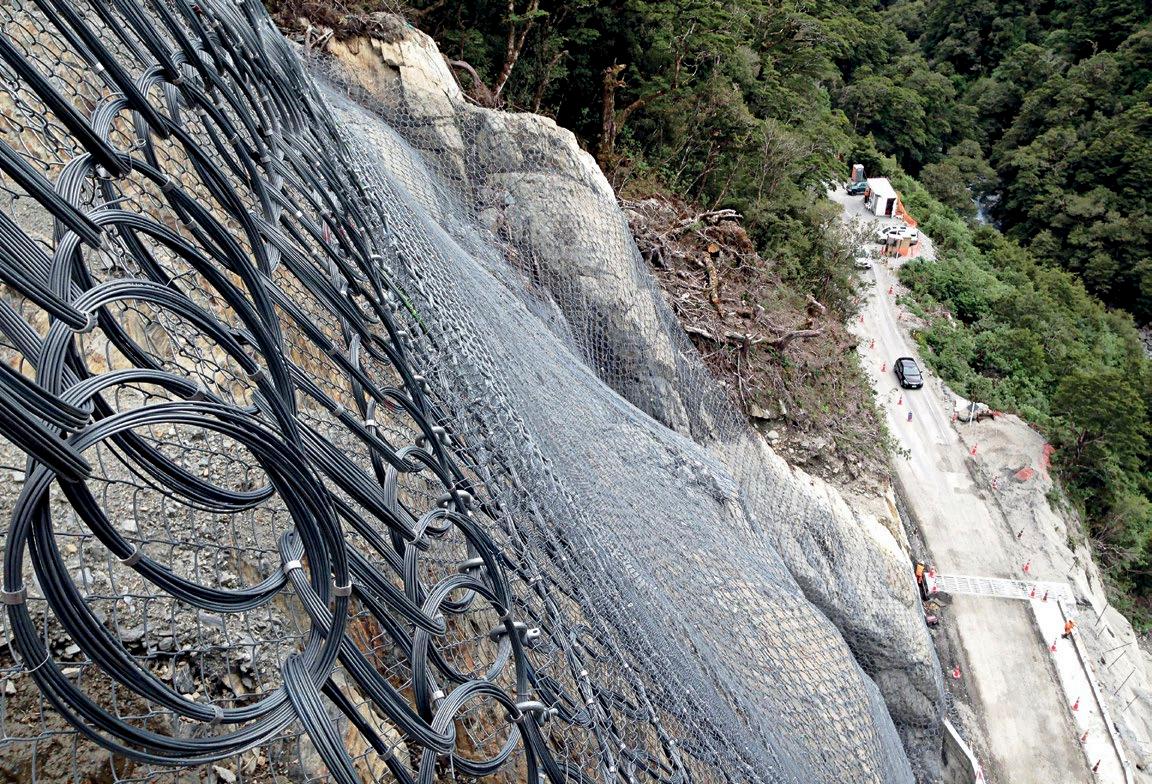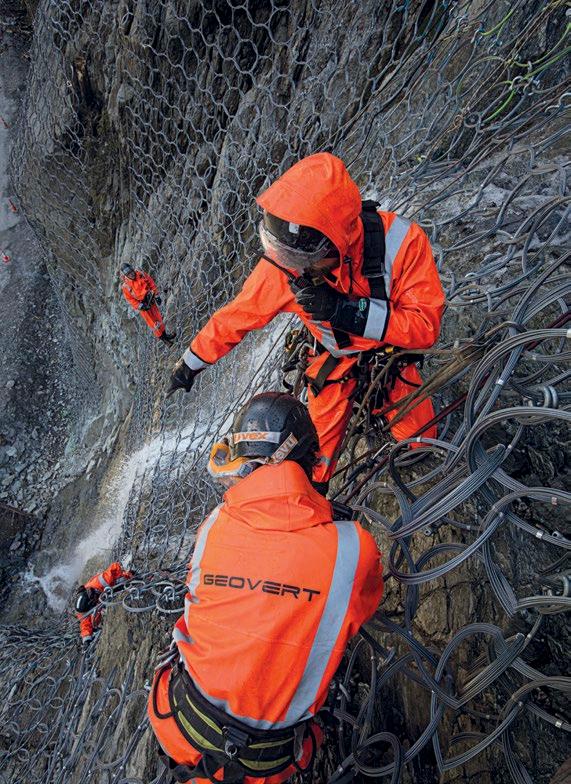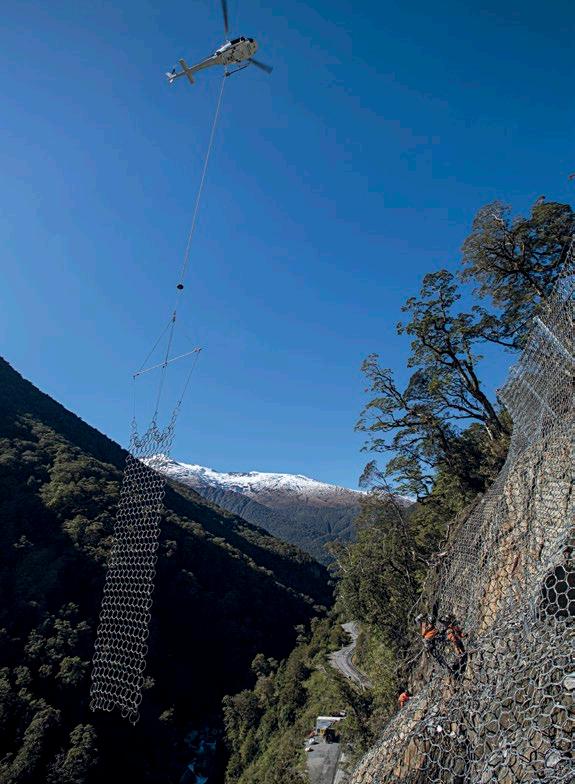
3 minute read
Geovert
Geovert reaches for the sky
to safeguard a scenic treasure
Advertisement
It takes people with nerves of steel to dangle 300 metres up an active rock slip. Fortunately, specialist geotechnical construction firm Geovert employs just such a breed – otherwise the Diana Falls stretch of Haast Pass would not be as safe as it now is.
CATEGORY 2
PROJECT: SH6 Diana Falls Slip Rockfall Protection, Haast Pass CONTRACTOR: Geovert In September 2013, a fierce rain event saw thousands of tonnes of rock tumble into the gorge below Diana Falls in the Haast Pass. The slip tragically claimed the lives of two Canadian tourists, cut off State Highway 6 and isolated communities in the furthest reaches of the lower West Coast.
The New Zealand Transport Agency was keen to put things right. That’s when Auckland-based Geovert and partner Geobrugg entered the picture – combining expertise in steep and treacherous terrain with cutting-edge rockfall protection technology.
The $3 million solution saw a system of rockfall catch fences, attenuators and mesh drapes placed across the length of the 40 degree slope. Overseeing this dangerous operation was Geovert project manager Mat Avery, who says the design of the project was nothing short of “groundbreaking”.
This was the largest single rockfall protection installation in Australasia, using a world-first combination of a single 3000 kilojoule and two 5000 kilojoule rockfall barrier attenuators.
One of the biggest issues faced during the project was intense rainfall aggravating the slip. An astonishing four


metres of rain fell during the April to November 2014 construction period, including a 300 millimetre weather bomb in the first days of work. As if this wasn’t bad enough, temperatures ranged from 26 degrees to a bone-chilling minus 10 with snow putting a stop to work several times.
Frequent rock falls led to rework and safety delays and the project team had to have their wits about them. At times, boulders (some the size of a house) would dislodge and either smash into the road below or clear it completely.
To mitigate this risk, a rock-rolling register was developed where rock movements were recorded. Automated monitoring systems were also installed, many of which, ironically, ended up being demolished by falling rocks.
As if wayward rocks weren’t bad enough, the project team also had to be wary of lightning strikes and tree fall. These risks were taken extremely seriously, with no staff allowed to enter the forest above the site and a policy of ‘tools down’ in the event of electrical storms.
The first step for Geovert involved ‘scaling’ the slip, and not just in a rope climbing sense. ‘Scaling’ refers to the manual removal of loose material using hand tools and airbags. Ultimately, over 733 man hours were spent scaling an estimated 735 cubic metres of debris from the slip face.
Helicopters were a key instrument in Geovert’s toolkit. Over 100 hours of Wanaka-based Alpine Helicopter’s time was used to fly materials to and on site. Some individual items weighed a metric tonne, testing pilots’ flying skills to the limit.
Despite the project’s unique environmental and safety challenges, the installation process itself was actually very streamlined.
“Using [the] helicopters to deliver posts to pre-installed base plates we could have them fully installed in less than four minutes. Using multiple teams one could be completing fine adjustments on one post while the second team was preparing for the installation of another post,” says Mat.
It became clear during installation however that ground conditions were highly variable in places. The attenuators and associated kit had to be anchored into stable rock. The problem was the presence of large voids and floating boulders in the slip. These needed to be drilled through and stable rock located beneath. A time-consuming process to say the least!
And it wasn’t all plain sailing. “On numerous occasions we lost anchor points, had damage to plant, lost days of site preparation, lost post anchors, and on one occasion a staff member suffered a near miss from rockfall,” Mat says.
The stretch of road below Diana Falls was finally reopened to 24-hour traffic on November 5, 2014. The New Zealand Transport Agency was overjoyed.
It had taken Geovert 205 days to complete the highly specialised rockfall protection scheme. This was a superhuman feat it can rightfully be proud of. But more importantly motorists can be assured that this part of the spectacular Haast Pass is now safer than ever before. l










